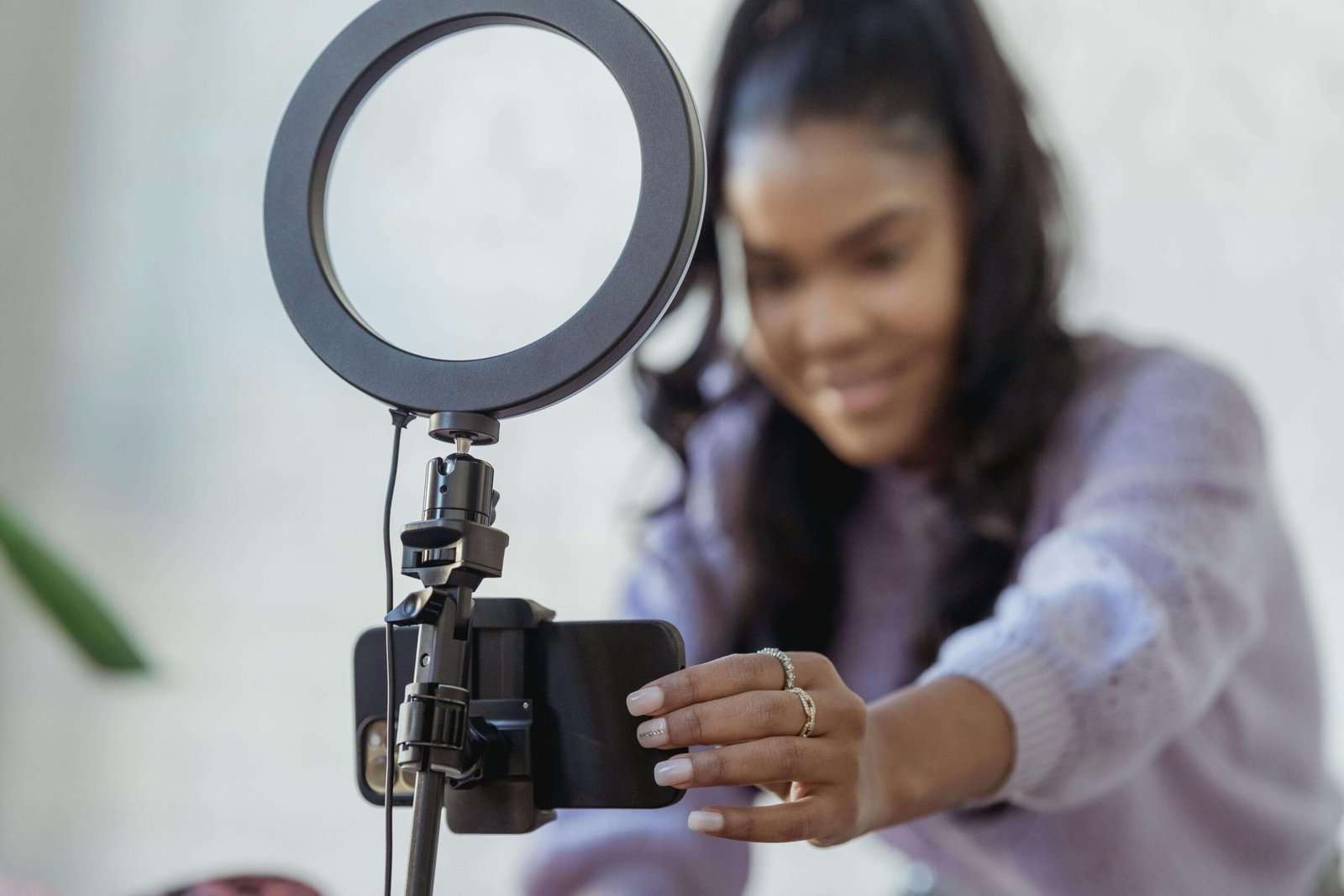Introduction
Social media influencers have transformed the marketing landscape, becoming a pivotal force in the digital age. These individuals leverage their online presence to shape consumer behavior, promote products, and build personal brands. From the early days of blogging to the current era of Instagram, TikTok, and YouTube stars, influencers on social media have carved out a unique and powerful niche in the advertising world.
In this article, we’ll explore who social media influencers are, how they gain popularity, the business behind their success, and their impact on consumer behavior. We’ll also delve into the challenges they face, future trends in influencer marketing, and how brands can effectively collaborate with these digital trendsetters.
Who Are Social Media Influencers?
Social media influencers are individuals who have built a significant following on social media platforms by sharing content that resonates with their audience. They come in various forms and sizes, including:
- Mega-Influencers: Celebrities with millions of followers.
- Macro-Influencers: Individuals with hundreds of thousands of followers.
- Micro-Influencers: Those with tens of thousands of followers, often in specific niches.
- Nano-Influencers: Everyday people with a smaller, but highly engaged following.
Examples of Top Social Media Influencers
- Beauty: Huda Kattan (@hudabeauty) – Over 50 million followers on Instagram.
- Fitness: Kayla Itsines (@kayla_itsines) – Renowned fitness trainer with over 15 million followers.
- Travel: Jack Morris (@jackmorris) – Travel photographer with over 2 million followers.
These influencers have cultivated loyal audiences by consistently producing engaging, authentic content that showcases their expertise and personality.
How Social Media Influencers Gain Popularity
Gaining popularity as a social media influencer involves several key strategies:
- Engaging Content: High-quality, visually appealing, and relatable content is essential.
- Use of Hashtags and Trends: Leveraging popular hashtags and participating in trending challenges can increase visibility.
- Collaborations: Partnering with other influencers or brands can help expand their reach.
- Consistency and Authenticity: Regular posting and staying true to their personal brand helps build trust with their audience.
Case Study: The Rise of Emma Chamberlain
Emma Chamberlain, a lifestyle and comedy vlogger, gained popularity on YouTube by sharing candid, relatable videos that resonated with Gen Z audiences. Her authentic style and unique sense of humor quickly garnered millions of subscribers, leading to brand deals and collaborations with major companies like Louis Vuitton and Calvin Klein.
The Business of Being an Influencer
Social media influencers have turned their online presence into lucrative careers. They monetize their influence through various revenue streams:
- Sponsored Posts: Brands pay influencers to promote their products or services.
- Affiliate Marketing: Influencers earn a commission for driving sales through unique affiliate links.
- Product Collaborations: Co-creating products with brands.
- Ad Revenue: Earnings from ads placed on their content, particularly on platforms like YouTube.
- Brand Ambassadorships: Long-term partnerships with brands.
How Much Do Social Media Influencers Make?
Earnings can vary widely based on the influencer’s follower count, engagement rate, and niche. For example:
- Nano-Influencers: $10-$100 per post.
- Micro-Influencers: $100-$500 per post.
- Macro-Influencers: $5,000-$10,000 per post.
- Mega-Influencers: $10,000-$1 million+ per post.
Impact of Social Media Influencers on Consumer Behavior
Influencers have a profound impact on consumer behavior. They shape trends, influence purchasing decisions, and create a sense of connection with their audience. According to a study by Influencer Marketing Hub, 49% of consumers depend on influencer recommendations when making purchasing decisions.
Psychological Impact
- Trust and Relatability: Consumers trust influencers who they perceive as relatable and authentic.
- Aspirational Influence: Influencers often represent an aspirational lifestyle that followers strive to emulate.
Case Study: Influencer-Driven Campaign Success
Glossier, a beauty brand, effectively used micro-influencers to build brand awareness and drive sales. By sending products to influencers who genuinely loved their products, Glossier created authentic word-of-mouth marketing that resonated with consumers.
Challenges Faced by Social Media Influencers
Despite their success, influencers face several challenges:
- Maintaining Relevance: Constantly creating fresh, engaging content.
- Mental Health: Dealing with online criticism and the pressure to maintain a perfect image.
- Algorithm Changes: Adapting to changes in platform algorithms that affect their visibility.
- Legal and Ethical Considerations: Navigating FTC guidelines and maintaining transparency with their audience.
Impact of Algorithm Changes
Instagram’s algorithm changes in 2019 significantly affected influencers’ reach and engagement, forcing them to adapt their strategies and diversify their platforms.
Future Trends in Influencer Marketing
The influencer marketing landscape is constantly evolving. Future trends include:
- Rise of Nano and Micro-Influencers: Brands increasingly collaborate with smaller influencers for their high engagement rates and niche audiences.
- Niche Markets: Influencers in specialized fields (e.g., tech, sustainability) are gaining prominence.
- Emerging Platforms: TikTok and other new platforms are creating opportunities for influencers.
- AR and VR Integration: Augmented reality and virtual reality are enhancing content creation and audience interaction.
Predictions for Influencer Marketing
- AI and Analytics: AI will play a significant role in identifying trends and measuring campaign effectiveness.
- Regulation Impact: Increasing regulation will ensure more transparency and authenticity in influencer marketing.
How Brands Can Collaborate with Social Media Influencers
Effective collaboration involves several steps:
- Finding the Right Influencers: Researching influencers who align with the brand’s values and target audience.
- Establishing Clear Goals: Defining the objectives and key performance indicators (KPIs) for the campaign.
- Crafting Authentic Campaigns: Ensuring the content feels genuine and resonates with the influencer’s audience.
- Measuring Success: Analyzing engagement metrics, sales data, and overall campaign impact.
Best Practices for Collaborations
- Mutual Benefit: Ensuring that both the brand and influencer benefit from the collaboration.
- Transparency: Clear communication and transparency about sponsorships.
- Adaptability: Being open to feedback and adjusting strategies based on performance.
Conclusion
Social media influencers have revolutionized the marketing industry, offering unique opportunities for brands to connect with consumers in authentic and engaging ways. As the landscape continues to evolve, both influencers and brands must adapt to new trends and challenges. By understanding the dynamics of influencer marketing and leveraging the power of social media, businesses can effectively reach their target audiences and drive meaningful engagement.
Frequently Asked Questions (FAQs)
- What defines a top social media influencer?
- Top influencers are characterized by their large, engaged following and the ability to impact consumer behavior within their niche.
- How do social media influencers gain followers?
- By creating engaging, authentic content, using hashtags, collaborating with other influencers, and maintaining consistency.
- What are the main ways influencers make money?
- Sponsored posts, affiliate marketing, product collaborations, ad revenue, and brand ambassadorships.
- How much do social media influencers typically earn?
- Earnings vary widely, from $10 per post for nano-influencers to over $1 million per post for mega-influencers.
- What impact do influencers have on consumer behavior?
- Influencers shape trends, influence purchasing decisions, and create trust and relatability with their audience.
- How can brands effectively work with influencers?
- By finding the right influencers, establishing clear goals, crafting authentic campaigns, and measuring success.
- What are the future trends in influencer marketing?
- The rise of nano and micro-influencers, niche markets, emerging platforms, and the integration of AR and VR.



